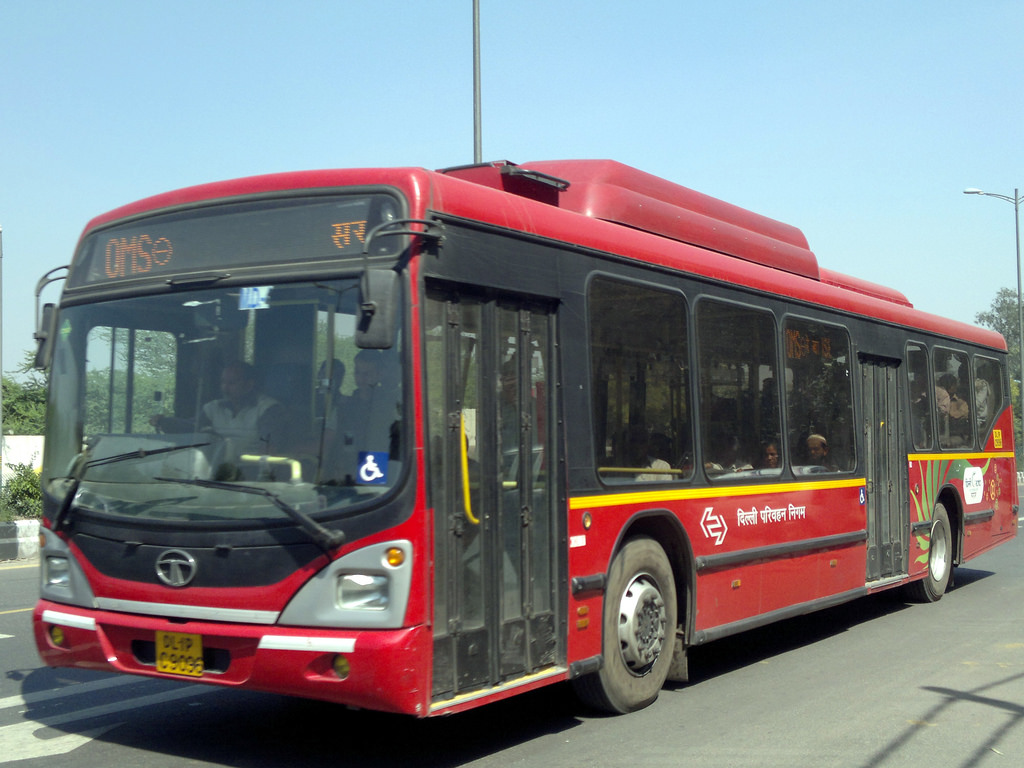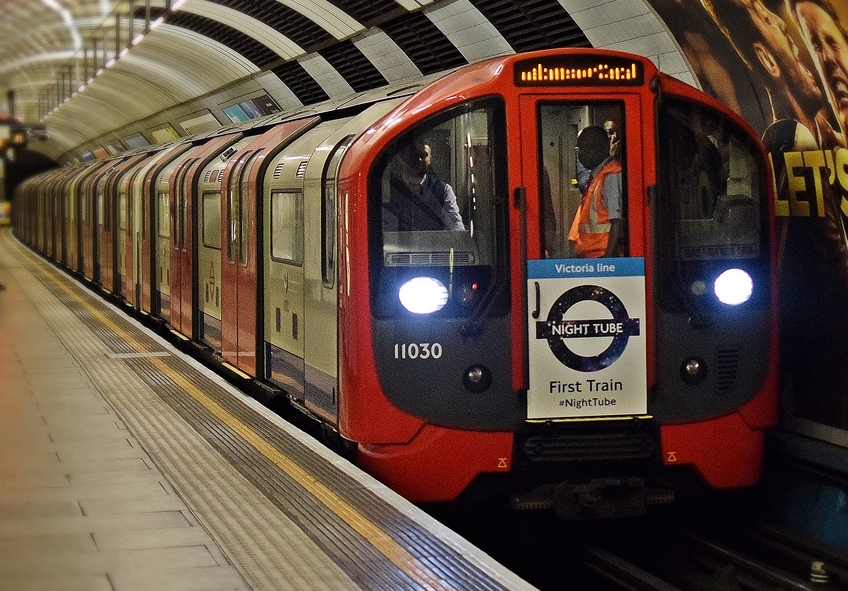As Delhi Chokes on Its Traffic, the Solutions May Come From London
Here's what the capital will be bringing in, all the way from England.

Public transport systems in this country are in a real mess. Although functional, they do little to alleviate the asphyxiating hold that traffic congestions have across Indian cities.
A well-functioning public transport system is not limited to smoother travel, but also better last-mile connectivity, women’s safety, and lower risk of air pollution.
Taking cognisance of the problem, the Government of India earlier this week signed a memorandum of understanding (MoU) with Transport of London (TfL), the UK capital’s premier public transport agency.
According to ANI, the MoU will present the necessary “framework for TfL and the Ministry of Road Transport and Highways (MoRTH) to work together sharing expertise to improve public transport system in selected cities in India.”
Delving further into the MoU, the ANI report states that both agencies will collaborate on “urban mobility solutions such as passenger information services, electric vehicle mobility, digital ticketing, major project financing, operations and maintenance strategies, and behavioural change and public transport promotion.”
India could do well to learn some of the lessons that TfL has imparted in its bid to improve the state of public transport in London. Delhi is the poster child of India’s rickety public transport system, despite the emergence of the Metro rail system.
With a steadily declining public bus system, poor avenues for cyclists and pedestrians, an over-regulated system of distributing licences for auto drivers and a Delhi Metro that does not necessarily provide last mile connectivity, there is an urgent need to revamp the public transport system.
Making matters worse are reports of private vehicle numbers increasing every year by 7-10% in the city, a major source of traffic congestion despite possessing an extensive network of roads and air pollution in the city.
What sort of solutions can London offer for cities like Delhi?
In public administration, it is well-understood that a multiplicity of authorities with no clearly defined roles or jurisdiction is a recipe for disaster. The national capital, for example, has 19 agencies spread across both governments that handle concerns ranging from road development, public transport, traffic management, and street lights, among others.
London, meanwhile, has one overarching authority, the TfL, which manages all forms of public transport including buses, the Tube (Metro), trams, private taxis and cycles, and maintains the city’s 580-km road network, traffic lights and levies congestion charges on polluting vehicles travelling through designated low-emission zones in the city.
Delhi would do well to streamline and integrate its entire public transport system.
The national capital must invest in its city’s bus services. For a population of 8.6 million, London has more than 9,000 buses, whereas 16.7 million people in Delhi can avail of just 5,421 buses. As the cheapest mode of public transport, buses are the heartbeat of a city trying to solve its congestion woes.

Moreover, these public buses in London reach places that aren’t covered by their rail system. There are plans to give buses greater priority over other vehicles along certain routes, besides an expansion in capacity by investing in more double-decker buses. Finally, the TfL under the new mayor Sadiq Khan launched this fare scheme called Hopper, which allows passengers to get on another bus for free within an hour after the beginning of their first ride.
Reports indicate that the Hopper scheme reported nearly 100 million rides in the first year of its implementation.
Broken seats and windows, minimal access for the disabled and no space to stow luggage, and overcrowding in the Delhi Transport Corporation buses are major concerns.
These basic features are in dire need of repair in existing buses. Moreover, the frequency of buses is a major concern, besides the fact that all public transport comes to a screeching halt after 11-11.30 pm. In London, there are night buses, and when their underground rail system suffers a lapse, the city runs alternative bus services.
The TfL also provides necessary support for the elderly and disabled with travel mentors.
With the advent of GPS and the smartphone, authorities in Delhi could establish an app or a system, whereby commuters receive second-by-second updates about the time of arrival, disruptions, accidents and delays. While the TfL app has its share of struggles, private apps like City mapper and Google Maps provide real-time information.
Why so much focus on the public bus system in a city like Delhi? As per RITES, a government enterprise, which specialises in the field of transport infrastructure, the Delhi metro meets only 20% of the city’s travel demand, while the public bus system will meet more than 70%.

A parliamentary committee admitted last year that private vehicles meet less than 20 percent of the city’s transport needs. It recommended that private vehicles should be discouraged by high parking fees and a congestion tax.
While cities the world over have made parking prohibitively expensive to discourage car use, it remains free or very low in Delhi and other Indian cities.
Read also: Karnataka to Buy 640 Electric Vehicles to Serve as Public Transport
Last month, the government had announced that commuters in Delhi can use their Delhi Metro smart card to travel on 250 buses in the city from January.
As per the new scheme, commuters can use their metro smart card as a ticket on nearly 200 buses under the Delhi Transport Corporation and 50 under the cluster bus system, allowing commuters to switch from bus to Metro without a hitch. E-ticket machines are already installed in all DTC buses and those under the cluster service, say local authorities. Additional work, however, will be required to install a secure access module (SAM) chip in these machines so that they can read Metro cards. London is 11 years ahead with their Oyster card, which works for all modes of public transport.
Another significant move, but a political hot potato, is the introduction of a congestion tax, which seeks to discourage private vehicles from entering popular routes. Not only has it discouraged private vehicles, a tax of GBP 11.50 (Rs 997) per drive raised revenue worth hundreds of millions of pounds. As per British law, this revenue is reinvested into public transport.
Read also: Mumbai to Have Battery-Operated Eco-Friendly Public Transport Buses Soon!
In 2008, London authorities introduced low emission zones in the city. If vehicles do not comply with emission standards, they are charged a fee, and in certain cases fines.
The TfL’s efforts have not necessarily resolved London’s traffic congestion problem, but these are steps in the right direction. This partnership, if followed through seriously, may offer our cities respite from the horrors of traffic congestion and all the associated health and safety risks that come with it.
Like this story? Or have something to share? Write to us: [email protected], or connect with us on Facebook and Twitter.
NEW: Click here to get positive news on WhatsApp!
This story made me
- 97
- 121
- 89
- 167
Tell Us More
We bring stories straight from the heart of India, to inspire millions and create a wave of impact. Our positive movement is growing bigger everyday, and we would love for you to join it.
Please contribute whatever you can, every little penny helps our team in bringing you more stories that support dreams and spread hope.



















